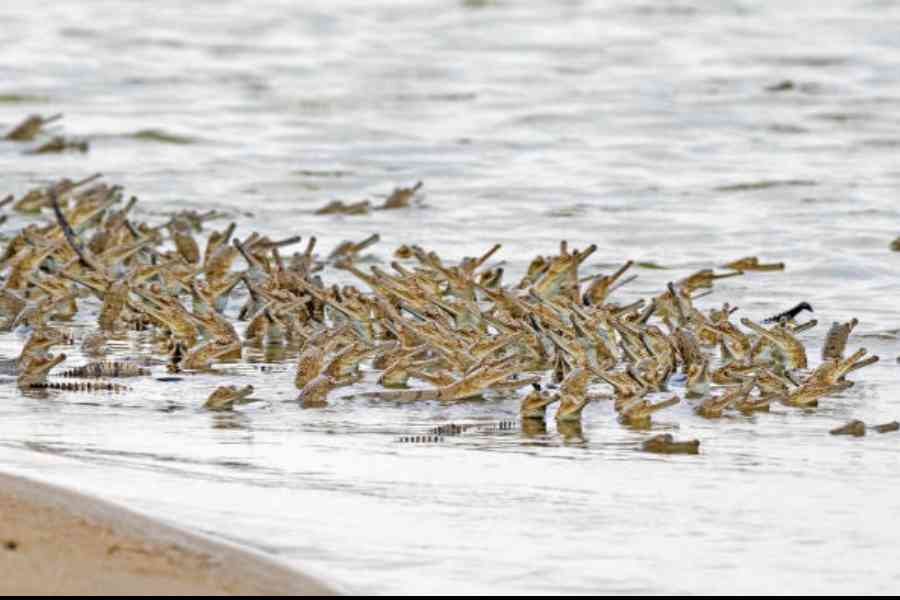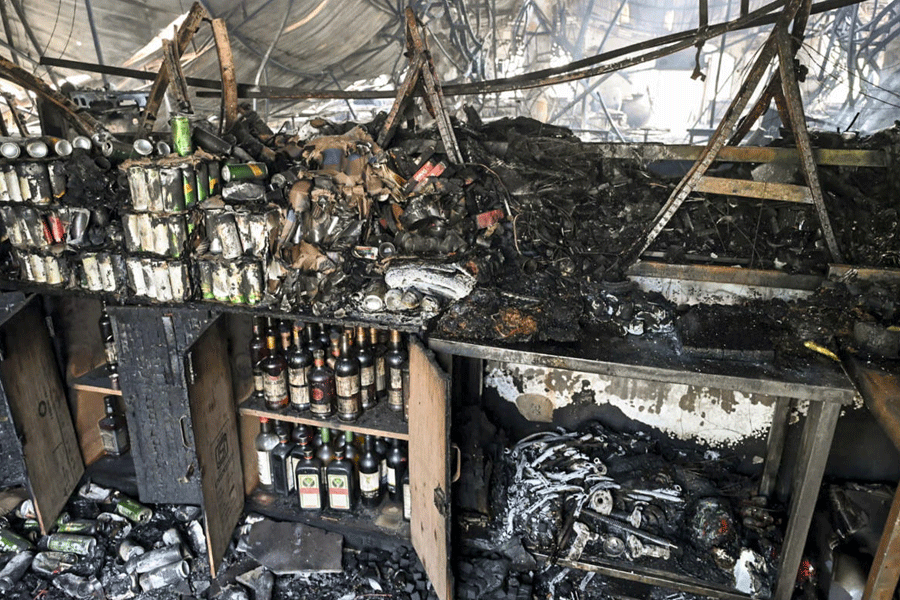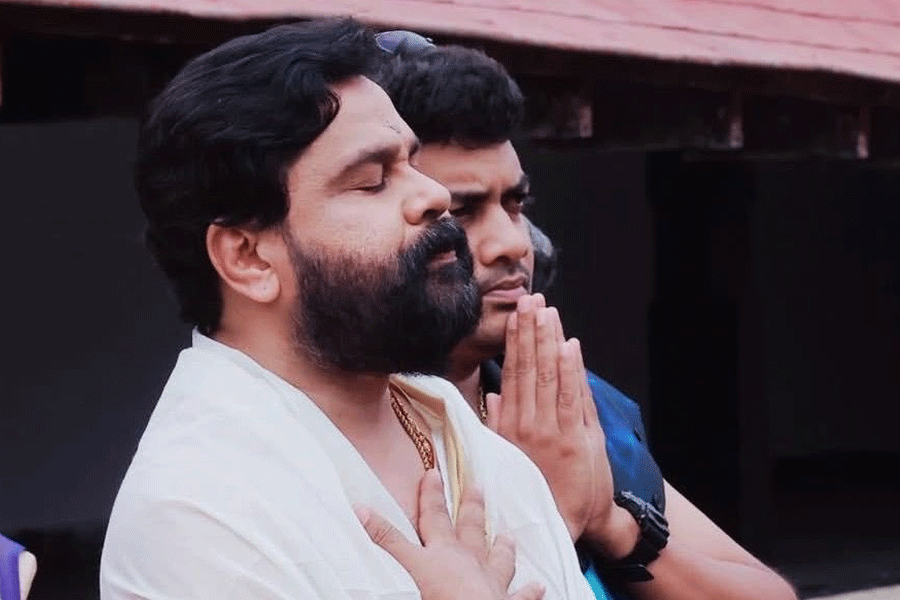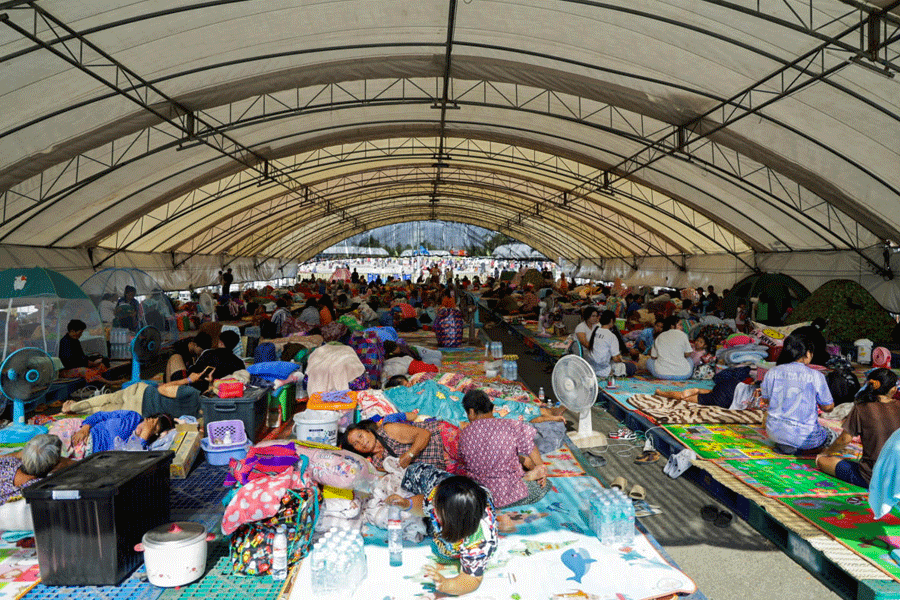A drive through the rugged ravines of Chambal and hours of patient waiting by the riverbank culminated in a rare moment — a giant gharial carrying its hatchlings on its head and body. The image, captured by a 60-year-old photographer from Calcutta, earned him an international award.
Rajarshi Banerji, a resident of Hindusthan Park, was honoured in Moscow on October 16 with an award in the Animal Behaviour category of the Golden Turtle Contest. His photograph, taken in May 2024 at the National Chambal Sanctuary in Uttar Pradesh, stood out among entries from photographers from 160 countries worldwide.
This accolade adds to Banerji’s list of international honours. Metro had earlier reported that he won the first prize at the Global Big Cats Photography Competition 2025 for his image of a pride of lionesses and their cubs drinking from a waterhole in Kenya.
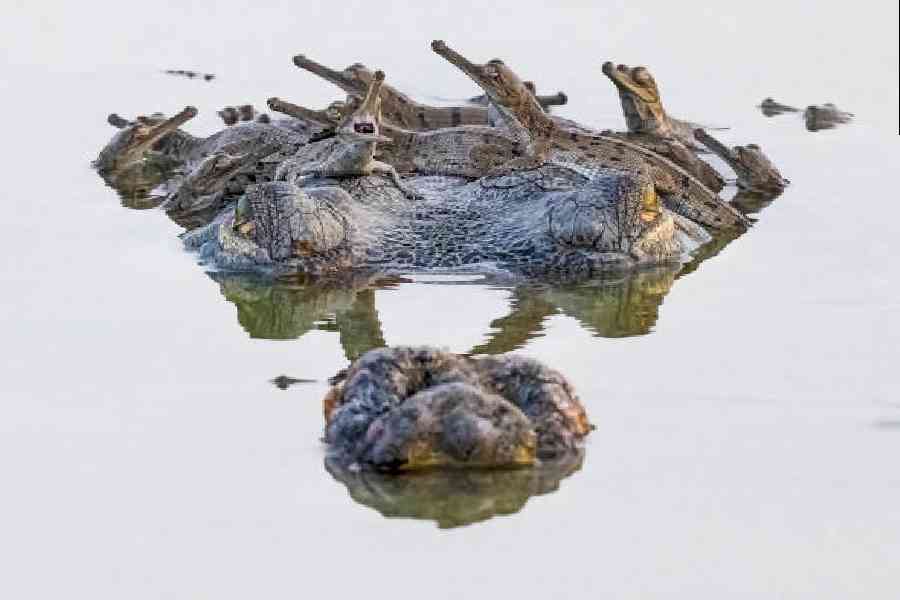
Gharial carrying hatchlings
In Chambal, Banerji would drive from his hotel in Etawah through the famous ravines and the villages nestled in them, near the banks of the Chambal river, and then walk a few kilometres to reach his spot. This routine continued for six days before he finally got the pictures he wanted.
“The gharials lay eggs on the riverbanks and then cover them with sand. In the extreme heat of May in Chambal, the eggs hatch,” said Banerji from Moscow. The hatching season usually falls between mid and late May when the temperature soars above 40 degrees Celsius, he said.
“The newborn hatchlings float in the shallow waters near the bank,” said Banerji. “The mother and father gharial keep watch in turns from the deeper waters.”
According to Banerji, gharials cannot carry their babies in their mouths, so the hatchlings climb onto their parents’ heads and bodies instead. They do this whenever they feel threatened or simply want to stay close.
“It took years of planning and coordination with the Uttar Pradesh forest department to get the timing and logistics right,” Banerji said. “This behaviour of adult gharials and their hatchlings can be observed only for a couple of weeks each year.”
He stayed at a hotel in Etawah and drove his own car to access the riverbank.
“Every morning and afternoon, I would go to the bank of the Chambal, which is in the middle of nowhere, hoping to capture the gharial carrying its hatchlings,” he recounted. “The drive through the ravines and villages was fascinating — though I was a bit apprehensive about the legendary dacoits of Chambal, the locals assured me it was safe now.”
He would reach the riverbank by 5am and stay till around 10am before returning to the hotel to escape the heat. Later, he would return by 3.30pm and stay until sunset.
For the first two days, Banerji didn’t spot any hatchlings. From the third day, he started sighting them.
He was nervous that the adult gharials might attack if they felt threatened, especially when guarding their young.
“Usually, gharials don’t attack humans, but they might if they feel cornered,” he said. Forest guards kept watch from the bank and would alert Banerji, who was sitting at the water’s edge, if they noticed any sign of aggression.
“Fortunately, there was no such incident. The hatchlings were climbing on their parents’ heads and bodies several times, but the adult’s face was not towards the camera, so I couldn’t get the portrait shot I wanted,” he said. “On the sixth day, I finally got the perfect pose — the adult gharial facing me, covered with hatchlings.”
Experts explained that, unlike other crocodilians that carry their young in their mouths, the gharial’s long, narrow snout prevents it from doing so. Instead, the babies climb onto the parent’s back for transport through the water. This behaviour protects the fragile hatchlings from being swept away by strong river currents and shields them from predators.
“Gharial hatchlings have a very low survival rate — most don’t make it past a year,” said Subrat Kumar Behera, a wildlife biologist and former project head at the Wildlife Trust of India, who led the Gharial Recovery Project at Nepal’s Gandak River. Experts said the average death rate is 92.7% within a year.
“A gharial lays between 30 and 90 eggs at a time, but the hatchlings are extremely vulnerable. Fishing nets and predators like big catfish, raptors, feral dogs and storks are their main threats,” he said.
He added that dams pose one of the biggest risks to the species’ survival. “They alter the river’s flow, fragment habitats and disrupt breeding cycles. Reduced water flow and oxygen levels affect the gharial’s food source, while sudden water releases can wash away nests and hatchlings. The construction of dams also destroys crucial sandy riverbanks needed for nesting,” Behera said.
Viacheslav Fetisov, the former Russian hockey player and now chair of the Russian Society for Nature Conservation, presented Banerji with the award.

